SIDDU or SIDDUKU – the Heart Winning Dish of DevBhoomi
The moment anyone asks
me – Siddu khaogi (will you eat Siddu)? And I am – Yes..Yes..Yes..- even after a
full meal. It is beyond doubt my most favorite dish of Himachal these days. Not
only me, many in the state also swoon on freshly steamed Siddu with desi ghee.
The story of Siddu has
been an interesting one for me. I was in Himachal from 1991-2007 and was not
even aware of it; but when I returned to the state in 2016, I was pleasantly
surprised to find that Siddu was almost everywhere - Tourism Hotels, local
eateries, parties and in all Melas. It
had assumed the status of being – the Himachali Dish – to be tasted and
savored.
In my Blog “Craft,
Culture and Cuisine” – the cuisine has not featured till now. So here it is and
what better than the state’s favorite to start with. Since I also wanted to
learn how to prepare them; I requested a dear friend Anita (also my colleague)
to teach me. Her Siddu’s are one of the
finest and tastiest that I have eaten till date.
So, what is a Siddu?
It is basically a stuffed steamed soft fluffy bread with variety of fillings. Traditionally, it is served with
ghee but now a wide range of chutneys are also a must. It is a whole meal snack –
but not a meal. It is an integral part of Himachali traditional cuisine and
rituals, but not a part of ‘Dhaam’ (traditional food of Himachal).
Siddu, originally, is the dish of
old Mahasu (old Shimla district) and from there probably travelled to Kullu, Mandi and Sirmour – and
now to the entire Himachal and across. Historically it is quite difficult to trace the origin of Siddu like any
cuisine as it develops over the years entwined with different traditions which gets
altered with migration of population.
The preparation of
Siddu probably started as a one meal nutritious dish when extended family,
friends and helps gathered for agricultural activities (Guraai), especially transplanting of paddy (Saawan ki Roopni) and
other construction activities. It was easier to cook to save time as every hand
was required to help with the work. It is also said that during Saawan ka
Sajja (Sankranti) - Siddus were distributed as part of celebrations.
Slowly, over time, Siddu must have become an integral part of the
local cuisine, deeply rooted in the cultural traditions and celebrations of
Himachal Pradesh as an exotic special dish.
Interestingly, Siddu showcases
regional diversity within the state in its size and shape, in its recipe and in
the way it is served. Different areas offer their own interpretations of this
dish.
The style of
cooking has also altered over times. Earlier they were stuffed and put on hot tawa
(flat pan) to be cooked on one side and then steamed in a big vessel which used
paddy husk (purali) as a base.
Now they are cooked in the steamers which are used by Tibetans to steam
their momos.
Interestingly, Siddu is
cooked as an exotic dish for guests; is carried over to relative’s places as
gifts; is sent with brides when she returns to her in-laws place and also
prepared during ‘gammi’ (bereavement times) in Kullu and Mandi. In
earlier times, the act of making and sharing Siddu strengthened
social bonds and fostered a sense of togetherness, as families came together to
prepare and enjoy this cherished delicacy. Now a days it is more
individualistic and commercial.
I still
remember the first time I had Siddu in 2016. It was served with lots of fanfare
- describing all its health benefits and traditional linkages – with ghee and
walnut chutney. I was a bit apprehensive as it didn’t look hugely appetizing –
but I tried it. First bite of fresh hot Siddu and I was won over for life. I
will say the magic was the combination of fermented whole grain flour and lentil
filling having a distinct spicy aroma. It being served with ghee created a
taste which I had never tasted before - earthy, spiced and tangy all together.
The preparation of
Siddu involves meticulous process. The tricky part is the kneading of the dough
with yeast to have the desired softness and elasticity and enough rise. If the
dough doesn’t rise well the Siddus don’t taste good. The taste of the filling
also depends on the spices used in required quantity. Once the dough rises, it
is carefully divided into portions, filled and folded well and steamed. I
learned that Siddu making is not difficult - but it requires precision,
practice and lots of love – like Anita demonstrated. I am not sharing any
recipe here as they are easily available on internet.
Now I come back to my original observation – how and why Siddu has gained so much mass popularity in past 7-8 years?
Three things – its taste, it being fermented and steamed and it being a complete nutritios meal.
Easy to eat and easy on pallet and stomach. Also the accompaniments allow the
eater to adjust the taste as according to one’s liking – mild or spicy.
One more thing which helped Siddu gain popularity is its easy availability in the markets now. Siddu was and is a special dish which was not cooked regularly at homes. But, as the Chef Nand Lal of Himachal Tourism says that it started gaining popularity once in was introduced in the menu card of the Tourism hotels, in Himachal Bhawan at Delhi and Chandigarh and was encouraged in all the Melas.
‘Rajni ke Siddu’ in Kullu Dussehera are the maximum crowd puller and so are Mandi ‘ke Daal wale Siddu’ which are now regularly available in Mandi town. In Shimla – the ‘Himachali Rasoi (in the middle Bazzar), ‘Hotel Holiday Home’ and recently opened ‘Café Khoblu’ (at Sanjauli Chowk) offers a wide variety of them. Café Khoblu also provides the Himachali ambience to compliment the Siddu. We also have chain of Siddu outlets - 'SiyaRam Siddu' in Narkanda, Phagu, Theog, and Mehli, Shimla started by Mr Jagdish Chauhan, a retired officer of Tourism department. They also offer Siddu making demonstrations. Similarly all big towns in Himachal have eateries offering Siddu – regularly or on demand. In the recent Him Mahotsav at Dilli Haat, Siddu was the most popular dish at the Himachal Food stall.




 At Cafe Khoblu with Saroj, Kartik and Anjali
At Cafe Khoblu with Saroj, Kartik and Anjali
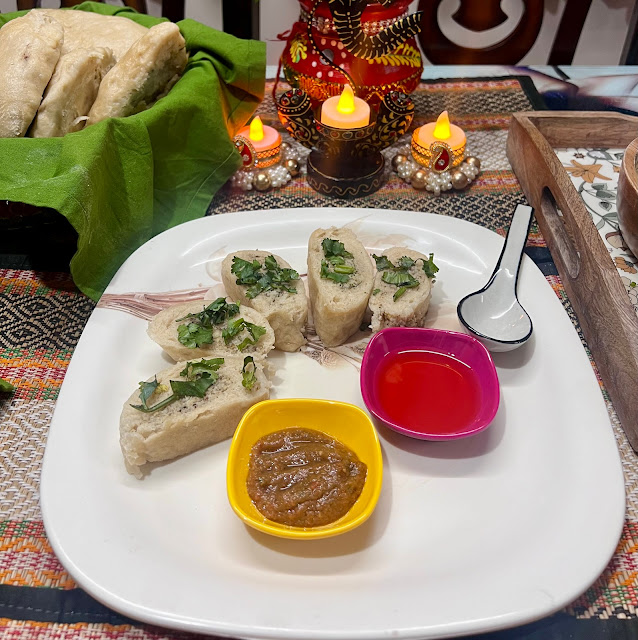







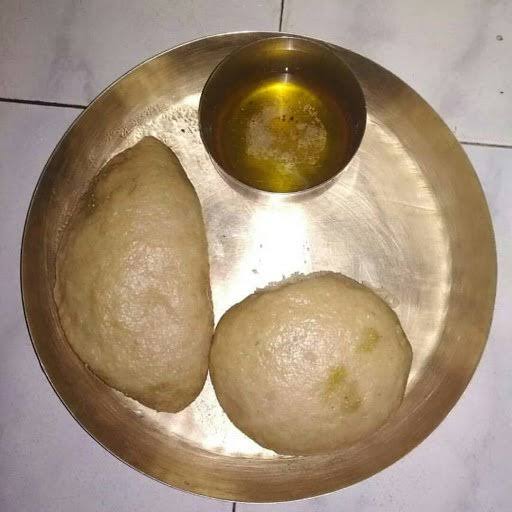



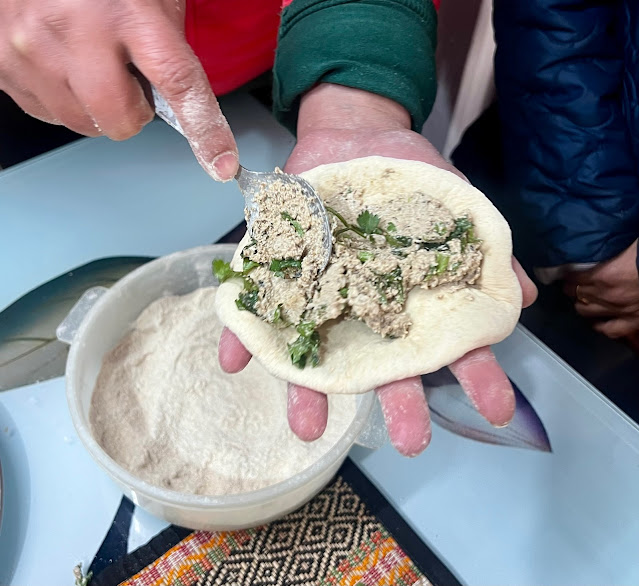


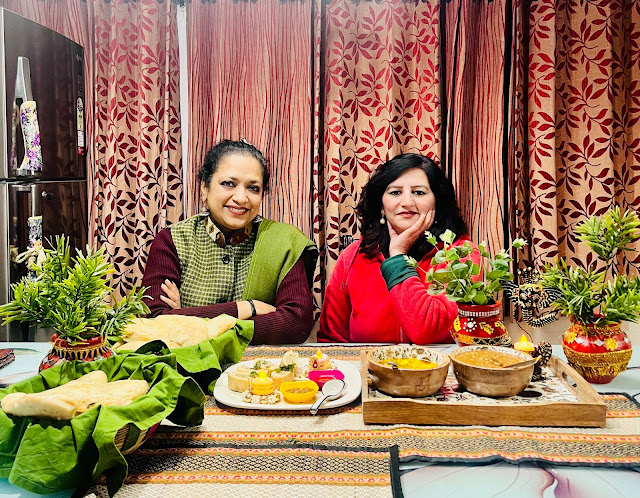


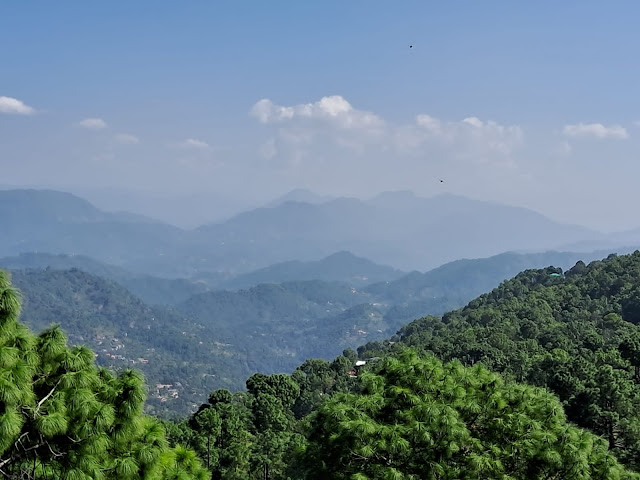
Very interesting!! Where in Delhi can I get Siddu?
ReplyDeleteHimachal Bhawan- Mandi House
Deletein my cloud kitchen
Delete7876084810
Very interesting and informative. Mouth watering too
ReplyDeleteAppears to be very tempting.
ReplyDeleteAwesomeness indeed♥️soulfully penned💯
ReplyDeleteNow i want to eat one ...
ReplyDeleteWow! I got to learn so many new interesting facts. Now I am craving one…
ReplyDeleteBeautiful Blog, or i can say yummy blog Mam. Bhookh lag gayi itni yummy siddu ki pics dekh kar.
ReplyDeleteWell researched mouth watering blog. Quite enjoyable read!
ReplyDeletehttp://anilkthakur.blogspot.com
ReplyDeleteExcellent
DeleteAn excellently written article about a Pahari cuisine, Madam. you have illustrated it so well that everyone will have a craving for this unique product of Himachal. I like siddus very much, but they are out of my reach at present. Poppy seeds and Bangjeeri (deshi chia in my words) used for stuffing are very nutritious. 🙏Thank you 🙏
ReplyDeleteThanks Sir … all your motivation
DeleteAmazing how beautifully presented.
ReplyDeleteMouth watering siddhu
ReplyDelete👍🏽👍🏽👍🏽
ReplyDeletePerhaps it is the palatable side of present Siddu that becomes enticing.Perhaps it is an alimental part of Himachali Siddu that becomes scrumptious .Perhaps it is the style , shape and stuffing of Pahari Siddu with dainty ingredients that becomes mouth watering.Earlier it was confined to only certain areas of Himachal where people used to have it without making it so sapid .Now the so called its mode of preparing ,presenting and offering Siddu to any gourmand has undergone an interesting change.That is why Siddu is fast becoming a gourmet meal across the state.So your taste and love for Siddu is again a proof of its increasing demand among the food lovers ma’am.
ReplyDeleteYou have come out beautifully about this Himachali dish by giving a demo and mentioning its recipe through your blog.I can only say:
Just look here and there,
Find Siddu everywhere ;
With its yummy taste ,
With its mouth watering paste .
So well written… thanks a lot 🙏
DeleteEnjoyed reading, feeling siddu pangs
ReplyDeleteV well written about Yummy siddu presentation is so good
DeleteSaving and glorifying our very nutritious and traditional recipes and promoting and presenting in a beautiful way। Congratulations Anurita Saxena
ReplyDelete